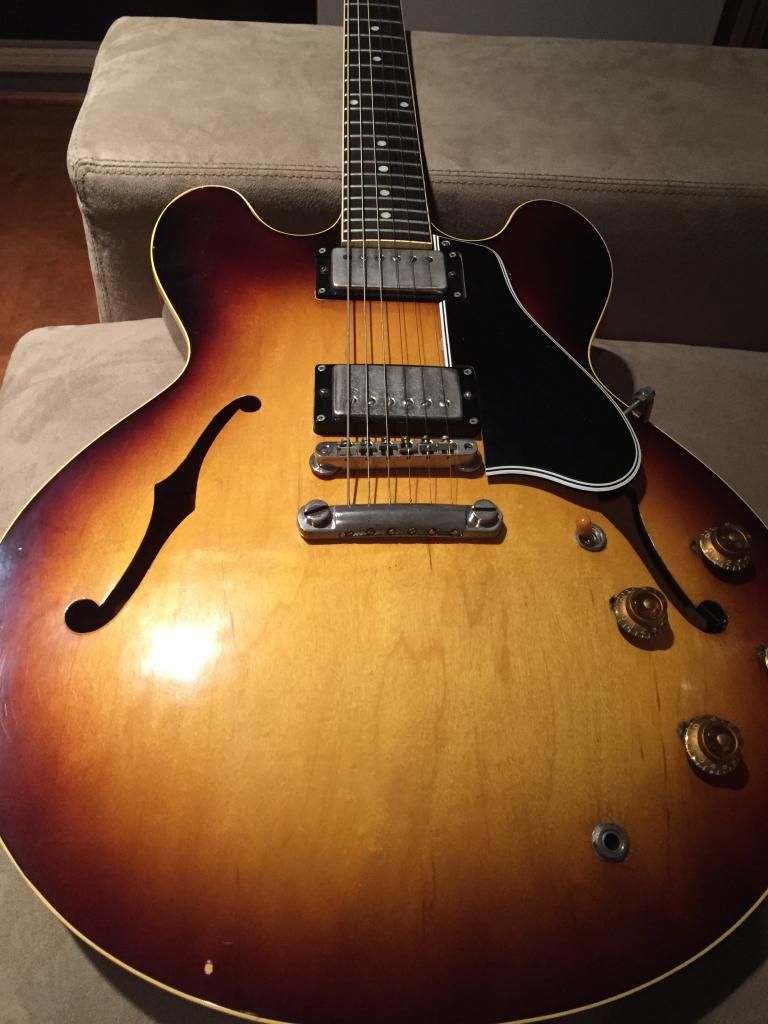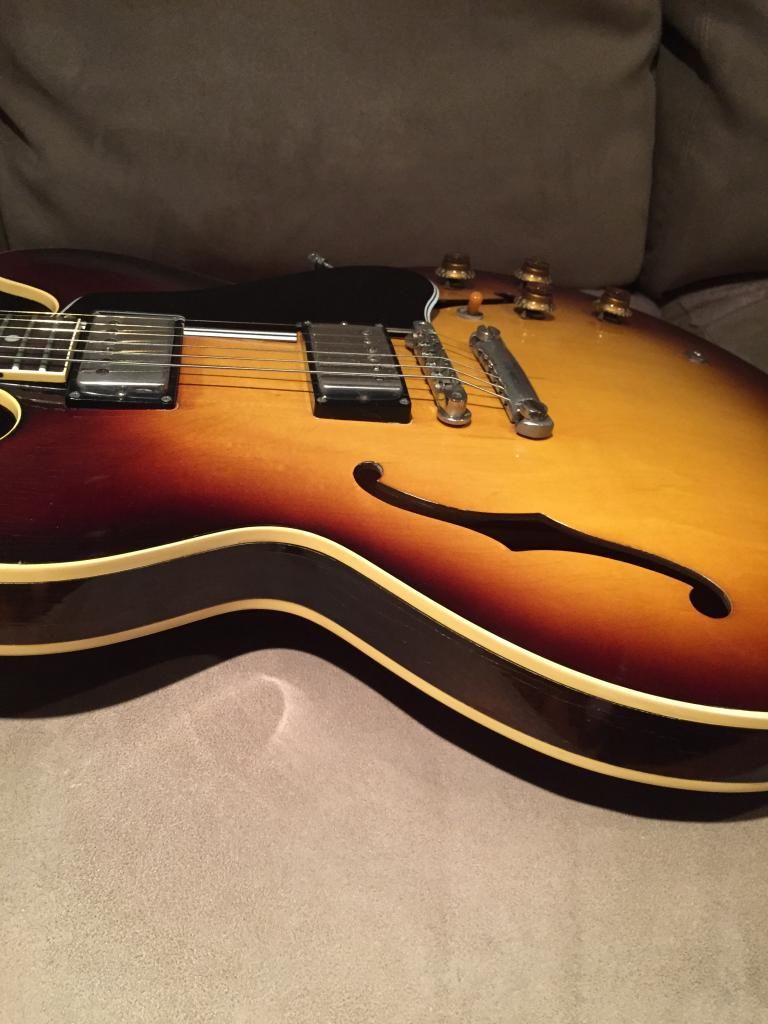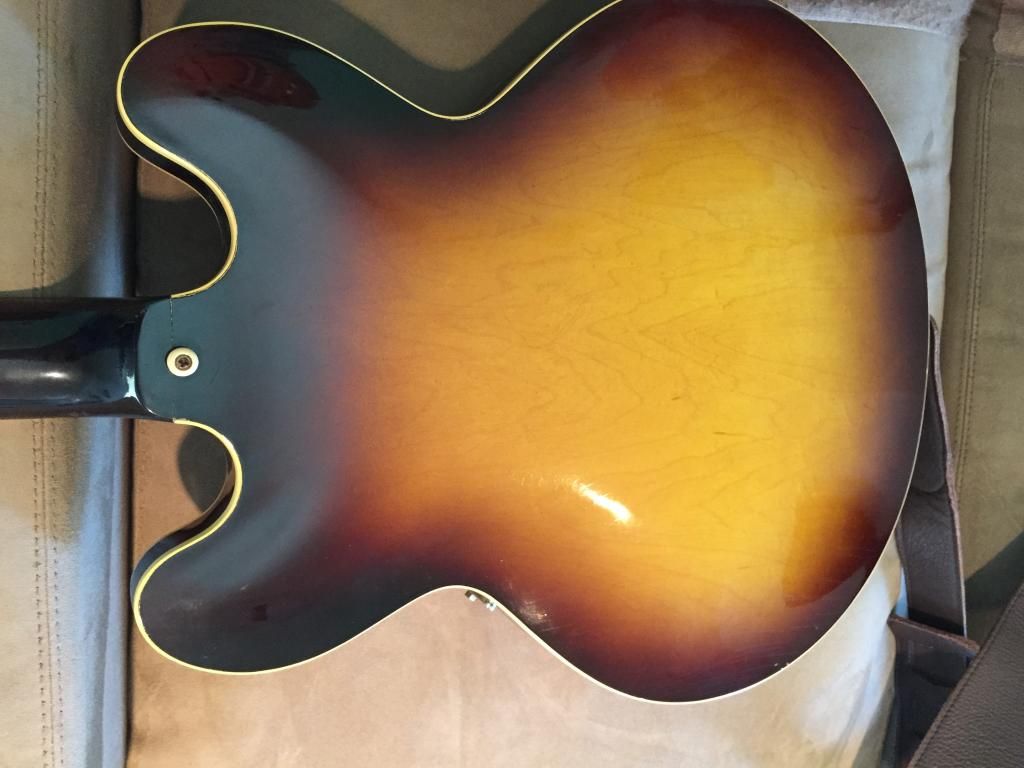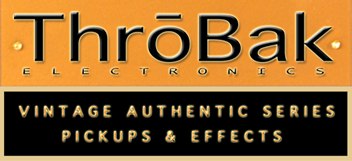Michael Minnis
Active member
- Joined
- Feb 12, 2004
- Messages
- 1,597
Hey, guys. Thought I'd share a few pics of the 1959 ES 335 I picked up at Arlington a few months ago. I'd been searching for a great dot neck for some time and this is the one that really spoke to me. As you can see, it's in fine condition. The guitar was Grovered at one point, but no extra wood was added. The serial number dates the guitar to April, 1959, although it has a “T” 1958 FON. Interestingly, Tom Wittrock's 1959 335 on Tom Hollyer's site is one FON away from mine. A few good friends Charlie Daughtry, Bill Fajen and Nacho Banos helped motivate me to bring the guitar home.











